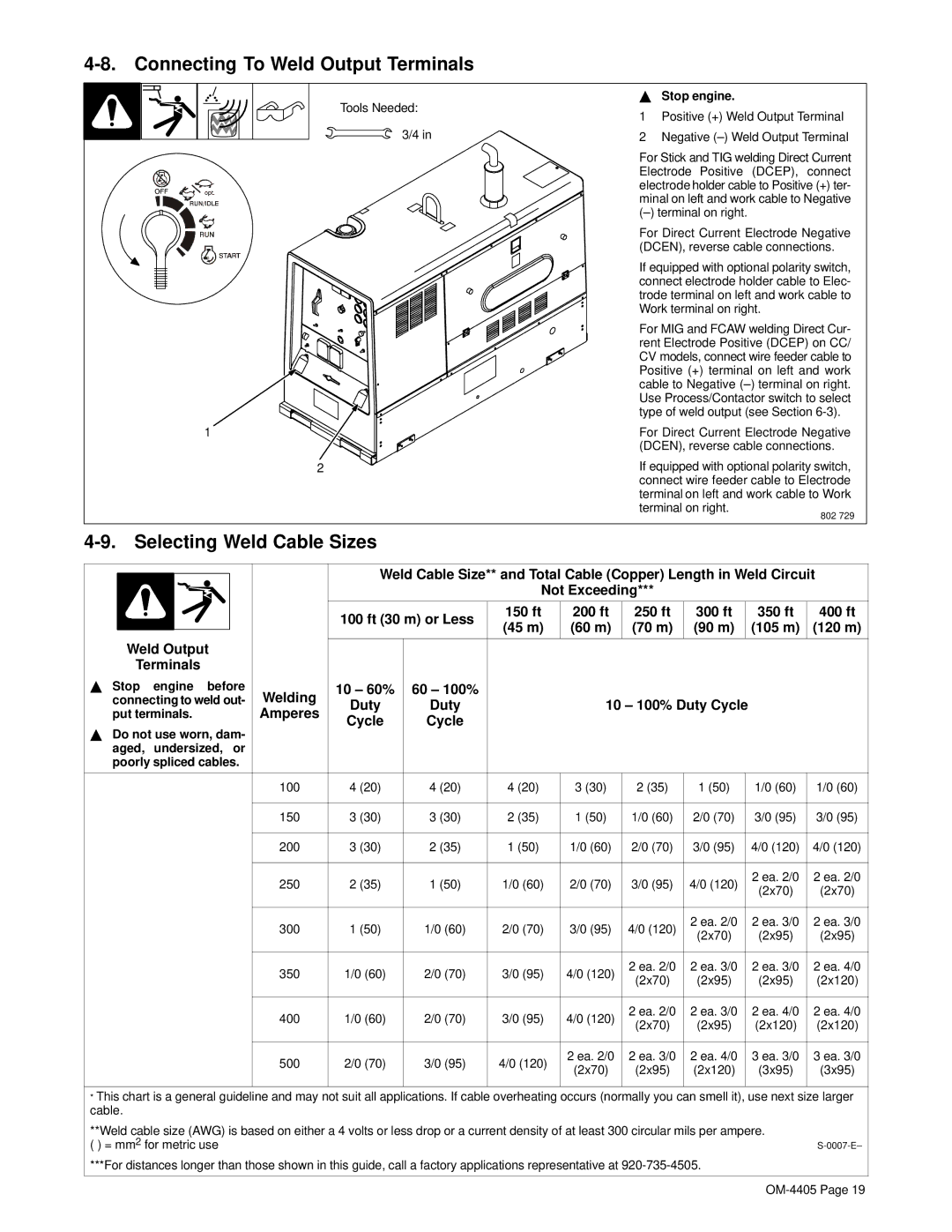Big 40 WG specifications
The Miller Electric Big 40 WG is a versatile and powerful welding generator designed to meet the demands of professionals in the field. Known for its reliability and robust performance, the Big 40 WG is the ideal choice for those who require both welding capabilities and a portable power source.One of the standout features of the Big 40 WG is its ability to produce a substantial output of up to 10,000 watts of continuous power. This ensures that users have enough capacity to run various tools and equipment, making it perfect for job sites where electricity may not readily be available. The generator is powered by a Kohler Command PRO engine, renowned for its durability and efficiency, ensuring that users can depend on its performance even in the toughest conditions.
The machine offers a dual capability for electric welding and stick welding, which enables users to tackle a variety of applications, from light maintenance tasks to heavy-duty industrial jobs. The Big 40 WG features an easy-to-use control panel, equipped with clear indicators and outputs that simplify operation. Whether you need to switch between welding modes or adjust settings, the intuitive design allows for quick responses and seamless operation.
In terms of technology and innovation, the Big 40 WG includes advanced features such as an automatic idle speed adjustment, which increases fuel efficiency and reduces wear on the engine. This technology not only helps save on fuel costs but also minimizes noise levels, providing a more pleasant working environment.
Another key characteristic of the Big 40 WG is its portability. Engineered with a lightweight frame and built-in lifting hooks, it is easy to transport and maneuver, making it an excellent choice for on-site work. The rugged construction ensures that the generator can withstand the rigors of outdoor use, enhancing its lifespan and reliability.
For those in search of a welding generator that delivers on performance, functionality, and portability, the Miller Electric Big 40 WG stands out as a preferred option. Its combination of powerful output, advanced technologies, and user-friendly features makes it a valuable tool for professionals across various industries, ensuring they can complete their jobs effectively and efficiently, no matter where they are.

